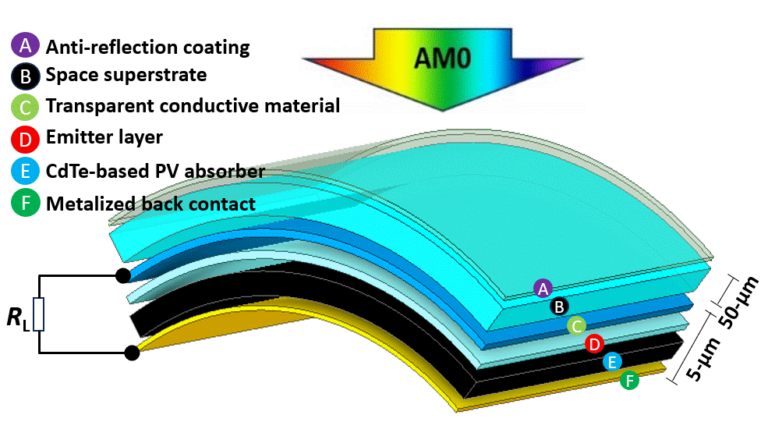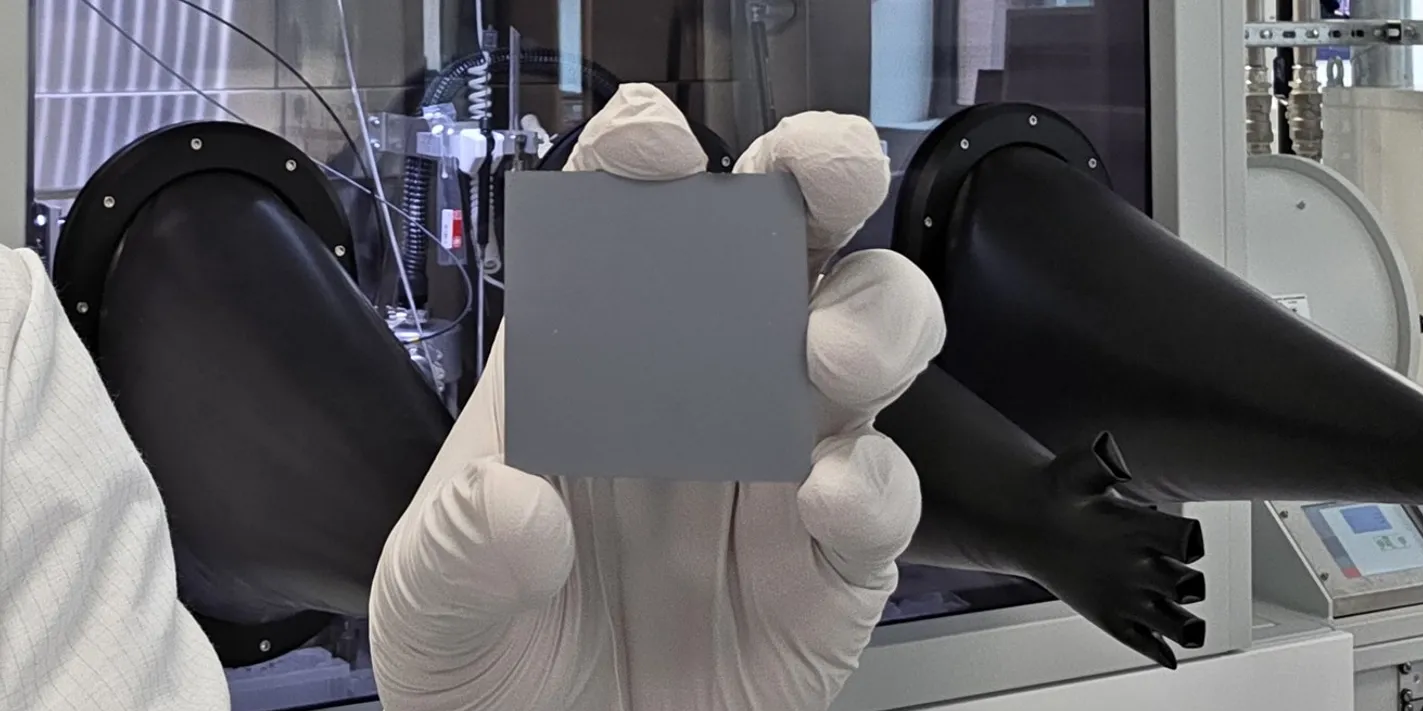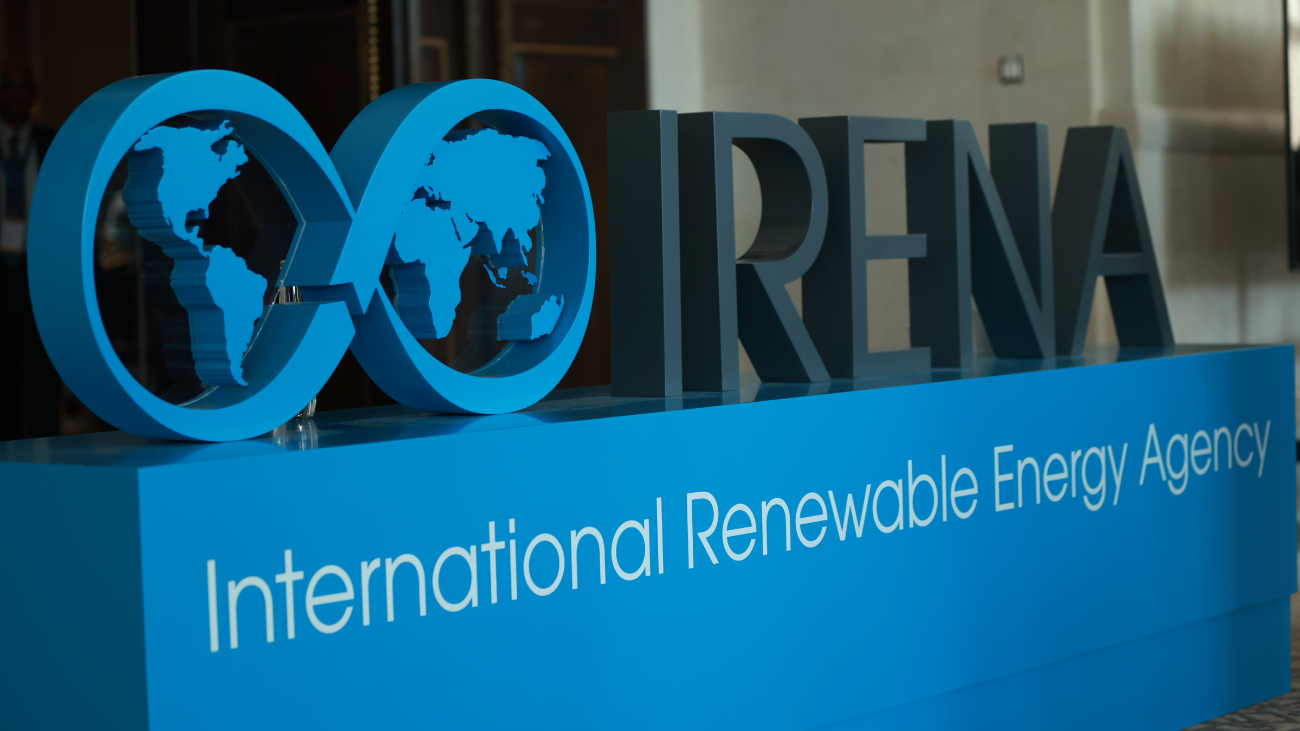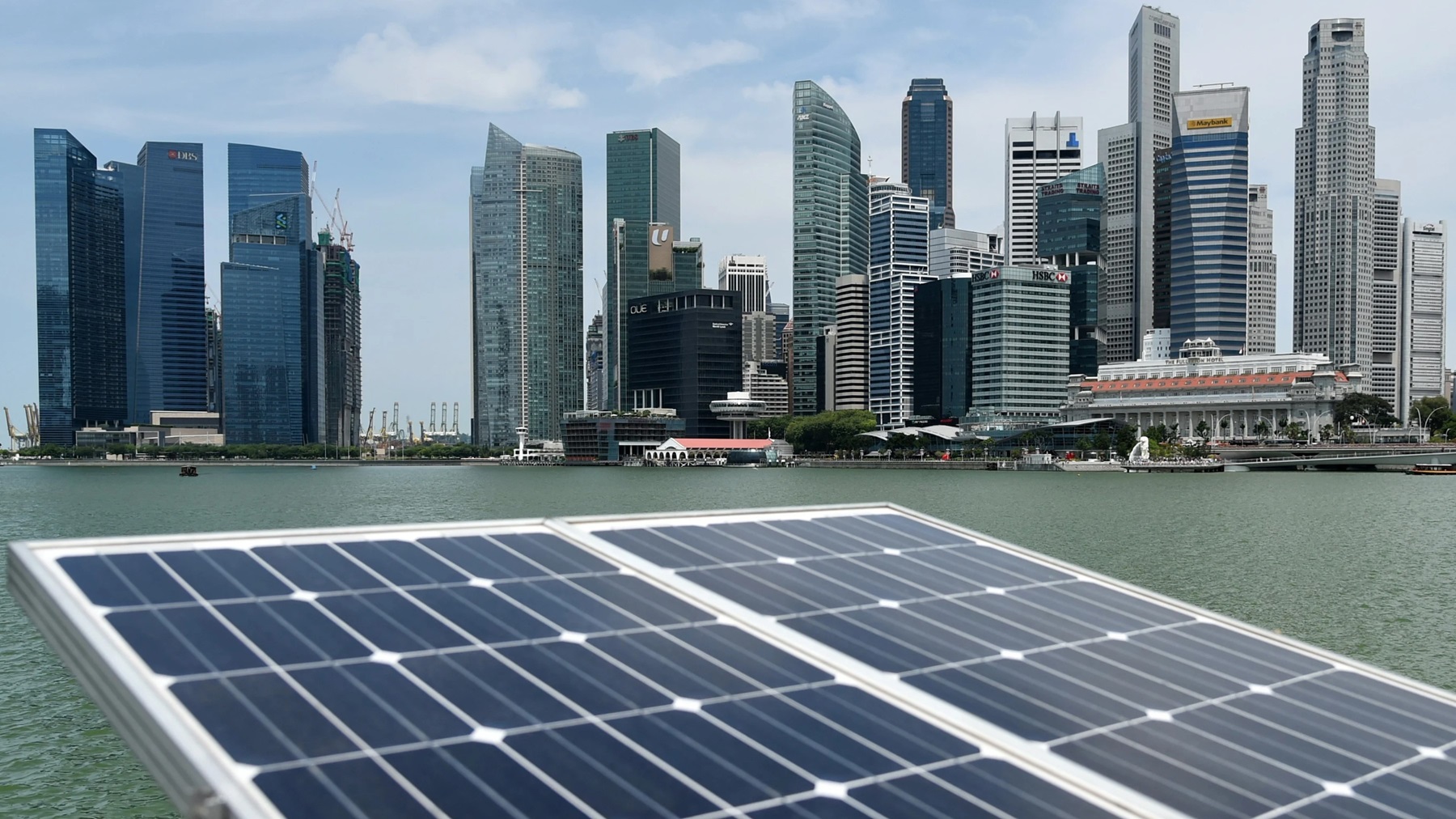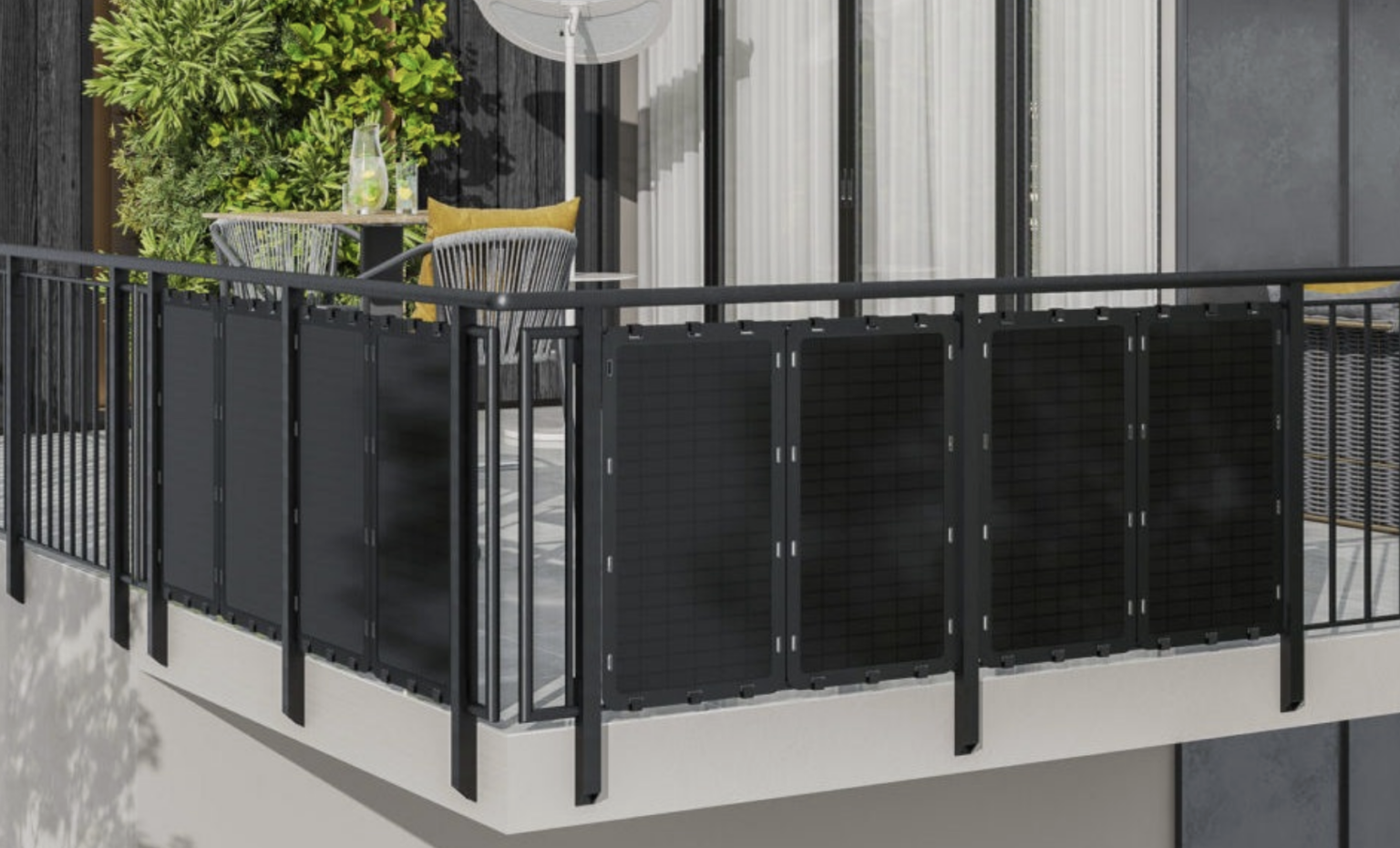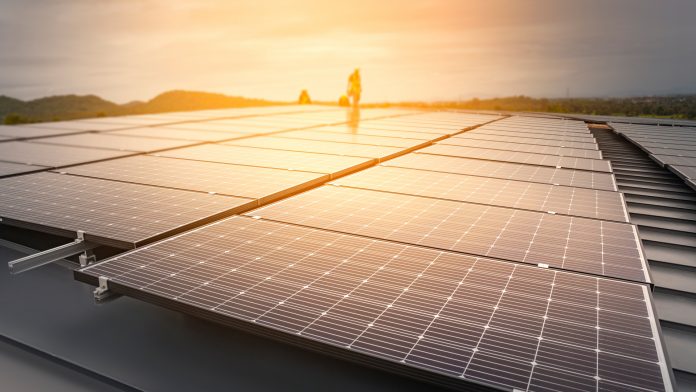A team of researchers from Swansea University and Loughborough University are working on lightweight cadmium telluride (CdTe) solar cell technology for space arrays. The aim is to develop 20%-efficient ultra-thin devices to provide lightweight, compact stowage, low-cost solar power for satellites and space-based manufacturing applications.
“We’re targeting an AM0 efficiency of 20% and a cell-specific power of 1.6 kW/kg,” Dan Lamb of Swansea University’s Centre for Solar Energy Research, Centre for Integrative Semiconductor Materials (CISM) told pv magazine, referring to air mass zero (AM0), which is the commonly used standard spectrum outside the Earth’s atmosphere. “This will be a robust space photovoltaic technology with extended mission lifetimes, thanks to CdTe’s inherent radiation stability,” he said.
The group’s CdTe solar design features an ultra-thin, flexible cover, which is used as both the substrate and for radiation protection. “The CdTe-based photovoltaic layers are deposited directly onto the cover glass,” said Lamb, noting that this reduces the cost and weight of conventional cover glass lamination. The specialty space-qualified glass is supplied by project partners Teledyne Qioptiq, based in the UK.
The Swansea University’snovel CdTe technology was tested for several years in low earth orbit (LEO) in an earlier project, as reported by pv magazine. It was one of the payloads on the AlSat-1N 3U CubeSat satellite that launched in 2016.
The current project specifications target higher efficiency and larger scales, along with the integration of selenium into CdTe (CdSeTe) PV. Additionally, developments from a recent doped emitter project with Loughborough University will be integrated, such as a high-resistivity zinc oxide (ZnO) layer positioned between the transparent conducting oxide (TCO) and the CdSeTe absorber layer, and new customized anti-reflection coatings for the device, according to Lamb.
The novel CdTe space solar cells are intended to be used in arrays with “lower stowage volumes.” Taking up less space opens up “possibilities for novel deployment methods and applications.” Such features could also contribute to reduced launch costs, and the potential to enable longer deployment in space, they noted.
Other objectives include using low-cost, high-volume production techniques to support the rapidly expanding demand for space satellites and missions. Furthermore, a deeper understanding of the radiation stability of both the material and the complete device architecture is sought. “In parallel, we are working to develop a techno-economic understanding of how CdTe-based photovoltaics could be manufactured for space competitively, and which space applications it would be best suited for,” said Lamb.
The researchers contrast the CdTe cell as a lighter, cheaper, highly radiation-resistant alternative technology to multi-junction solar cells, which currently dominate the space market due to their high efficiency, but that have “complex manufacturing and high costs which limit scalability.”
The three-year collaboration is supported by Engineering and Physical Sciences Research Council (EPSRC), part of UK Research and Innovation (UKRI), and includes teams from Swansea’s CISM and Loughborough Centre for Renewable Energy Systems Technology (CREST), along with six industrial partners, including high-purity materials supplier 5N Plus based in Canada, CTF Solar in Germany, along with UK-based companies, Manufacturing Technology Centre, Satellite Applications Catapult, Teledyne Qioptiq, and metal-organic chemical vapor deposition (MOCVD) tool supplier Aixtron.
